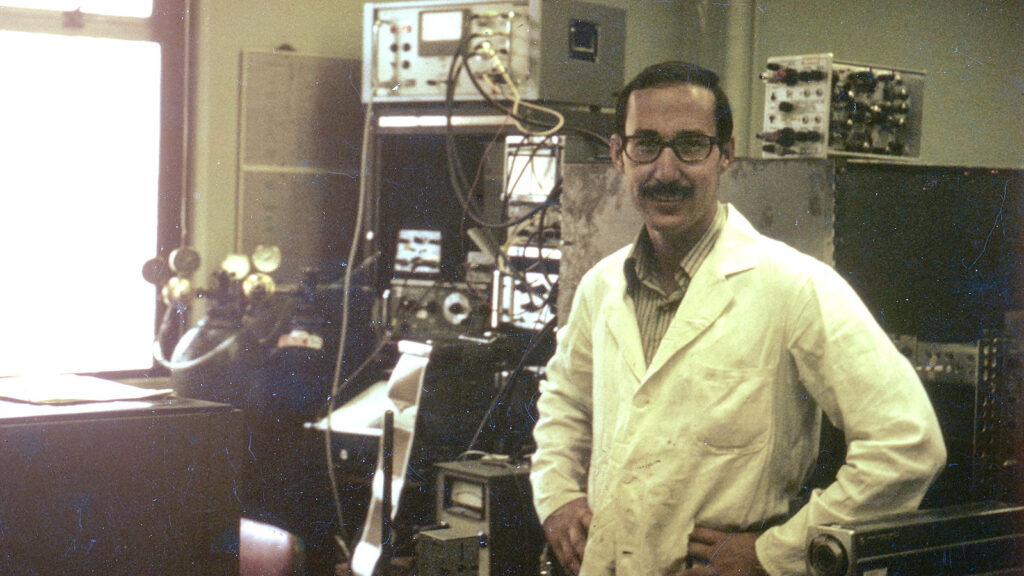I used this apparatus in the Laboratory of Chemical Biodynamics at the University of California to investigate the first dye-sensitised solar cells in 1970: I operated them with chlorophyll obtained from spinach (Ref. 8, 10).
Three years earlier, when I studied a poorly conducting semiconductor material, crystals of zinc oxide, in my diploma thesis at the Technical University of Munich, I found only low light sensitivity and small currents triggered by ultraviolet light. Fascinated by the role of the photosynthetic dye chlorphyll, I started painting the crystals with dyes. I had already read that dyes improve the sensitivity of photographic plates.
The lab staff thought this was strange and senseless and also feared for the purity of the experiment. The professor dropped by and could not be convinced by my explanations. I was asked to refrain from the dye experiments. However, as I was curious to see an effect, I continued the experiments secretly at night when no one was present. Indeed, when exposed to light, the dye was able to trigger significant currents in the transparent crystal electrode. Eventually, my professor rewarded my persistence with his permission to study this phenomenon in a doctoral thesis, which I was able to complete in a fairly short time. I continued my work at the University of California.


 Deutsch
Deutsch Italiano
Italiano